Neither of those sound like good news for Oracle Health. After the lofty proclamations of the last couple years. still…
Monday Morning Update 8/22/11
From Hot Off the Press: “Re: Cal eConnect. President and CEO Carladenise Edwards PhD steps down.” HOTP forwarded her e-mail from late Friday afternoon announcing her transition to senior advisor of the HIE organization due to “personal reasons.” Cal eConnect was created when California’s HHS department, overseer of $39 million in federal HIE grant money, decided to form a new statewide oversight organization instead of supporting CalRHIO, effectively shutting that organization down in January 2010. TechLeader obtained information suggesting that earlier last week, Cal eConnect suspended its RFP for a provider directory service, with no bidder selected.
From THB: “Re: tax-exempt hospitals. A potential trend?” Three non-profit Chicago area hospitals express shock that the Illinois Department of Revenue has denied their tax-exempt status requests, ruling that they aren’t owned by charitable organizations and aren’t being used for primarily charitable purposes and therefore must pay property taxes like any other business. The state said the hospitals didn’t list uncompensated care on their requests, but did in their own records: Prentice Women’s at Northwestern (1.85% – pictured above), Edward (1.04%), and Decatur Memorial (0.96%). The state says it won’t set a minimum charity percentage, although one legislator is sponsoring a bill that would require at least 3.5% of total revenue. Just for fun, I checked the IRS forms of Edward Hospital: it made a profit of $25 million in the most recent year, paid the CEO $1.6 million, and claimed it provided $45 million in charity care.
From The PACS Designer: “Re: IBM’s 100th anniversary. Most all of us have encountered business relationships with IBM in our work careers. TPD first learned about IBM solutions in the early 1960s while getting educated to be an electronics engineer by being trained on the use of an IBM vacuum tube computer. Later in my electronics career, I worked with IBM to interface the IBM Shark information storage system to a PACS to create one of the first central archives for all hospital information including imaging files. InformationWeek recently published a video history of IBM’s 100 years.”
Thanks to a few of my overachieving sponsors who have already swapped out their animated ads with a static replacement, well in advance of the January 1 deadline I set to allow them plenty of time. I appreciate it, as do those many readers who requested that change.
Over 60% of respondents agree with the recommendation of Congresswoman Renee Ellmers that HHS study EMR effectiveness and impact on patient safety. New poll to your right: does Epic CEO Judy Faulkner have too much influence on federal government healthcare IT decisions?
Listening (and watching): reader-recommended Live from Daryl’s House, a fascinating Internet program created by (and paid for by) the first half of Hall and Oates. I hated the 80s poofy-haired, “blue-eyed soul” dreck they did and was kind of hoping he’d been reduced to unpaid gigging at the Paducah Holiday Inn, but I now want to be Daryl Hall: inviting all kinds of big music names to jam with him in a barn-like room of his $16 million spread, drinking wine, bringing in guest chefs to cook for them, having scintillating dinner conversations, and recording the whole thing as a homebrew reality show. The audio and video quality are amazing, the guests compelling. My favorites so far have been Grace Potter and the Nocturnals and Krieger / Manzarek of The Doors, with whom Hall does just fine vocal work on my favorite Doors tune, The Crystal Ship. He’s 64, rich, and living large, just playing his music to an Internet audience. I’ll grumblingly admit that even the versions of Hall and Oates tunes he and his guests covered (like the insipid Sara Smile) sound amazing and fresh. I wish I could be that cool.
I swear that Vince Ciotti is digging deeper into company histories with every new HIStory chapter, finding veterans willing to share their previously untold stories. This time he covers a company I don’t remember: Sentry Data. Upcoming are these vendors: AR/Mediquest, JSData, and Gerber-Alley, so if you have war stories to tell about them, Vince is your guy.
Urology EHR vendor meridianEMR files a lawsuit and gets a restraining order against competitor Intuitive Medical Software (UroChart), claiming UroChart cloned one of its servers and thereby gained illegal access to meridianEMR’s product and the protected health information stored by its clients.
The weekly employee e-mail from Kaiser honcho George Halvorson talks up their first iPhone app, KP Locator, which he says is “the next connectivity path on a journey that is turning into a superhighway of connectivity over time.” He says it’s the first of many that will be built and invites employees to send him ideas for the next round.
An article in Silicon Valley / San Jose Business Journal details how much local hospitals are spending on EMRs. Factoids: (a) 403-bed Mills-Peninsula Hospital spent $50-75 million; (b) six Daughters of Charity hospitals spent a total of $80-90 million; (c) Stanford says it’s spending 30% of its total available capital each year to implement EMRs; (d) Stanford also spent $13 million to hire a 100-member temporary go-live team for three weeks, which must be a misprint or an incomplete description since that’s over $800 per hour; (e) O’Connor Hospital spent $2-3 million on EMR training; (f) Mills-Peninsula expects to spend 2.5% of the hospital’s entire budget each year in perpetuity for EMR maintenance.
Beth Israel Deaconess reportedly offers its CEO job to Kevin Tabb, chief medical officer at Stanford Hospitals and Clinics, who would replace the ousted Paul Levy. He’s an internist, but went into healthcare IT straight out of residency as a clinical informatics analyst for iKnowMed, a data director for MedicaLogic, president of clinical data services for GE Healthcare, and then chief quality officer / CMIO for Stanford. Sounds like he would be a geeky kindred spirit for CIO John Halamka there.
Asante Health System (OR) chooses Epic, saying “only one vendor had an integrated solution for hospitals and physician offices, and that was Epic.” They also added that Epic puts 47% of earnings back into R&D and has less than 2% of its workforce involved in sales and marketing.
Thirteen Danish hospitals announce plans to migrate their 25,000 employees from unnamed proprietary office software (care to take a guess?) to the open source LibreOffice, a fork of OpenOffice.org.
A computer professor in England enlists the help of his colleagues to create a computer game to help his four-year-old daughter, who has cystic fibrosis. She can control on-screen graphics by breathing into a PEP mask, which forces her airways open, an otherwise monotonous exercise that kids don’t enjoy. Her doctor can review her game results to determine how her lungs are doing. The group hopes to have the game tested and available to the public within a year.
Former Allscripts COO Ben Bulkley is running Fluidnet, a Massachusetts-based IV infusion control system vendor that just raised $25 million in investment capital.
HP wants out of the consumer computer business, but its systems work isn’t such a hit in Ohio either, where the Medicaid Information Technology System that went live on August 2 is inappropriately denying payments to providers, improperly kicking patients off assistance programs, and causing prescriptions to go unfilled by rejecting the Medicaid bills from pharmacies. Rep. Dennis Kucinich will meet with CMS administrator Don Berwick on Tuesday.
Regulation of EMRs by FDA
By Tim Gee
In the HIMSS top nine trends to watch in health IT, they missed a big one: the regulation of EMRs and other applications by the FDA, and potentially transforming providers into medical device manufacturers.
Between the final MDDS rule (which called out hospitals as potential regulated medical device manufacturers) and public testimony by Jeff Shuren, director of CDRH at FDA that the FDA intends to regulate at least some EMR software, healthcare IT is going to be coming to grips with FDA regulations for some time to come.
How many hospitals have written software to acquire data from medical devices? I’d guess over 100. I’ve heard estimates from sources that FDA expects to be regulating thousands of new manufacturers in the near term.
Since the final MDDS rule was published, four providers have registered with FDA as medical device manufacturers and listed their MDDS products with FDA. The providers are Partners, Gundersen Lutheran, Intermountain Health, and the Alaska Native Tribal Health Consortium.
And when FDA regulates portions of EMRs (they’ve set their sights on decision support systems first), providers who modify their EMR applications may be transformed into medical device manufacturers and become regulated, too. How many early adopter hospitals have have written their own DSS from scratch? They, too are likely to become regulated medical device manufacturers.
The MDDS rule was the shot across the bow. Expect a draft guidance document from FDA on regulating EMRs late this year. Yes, FDA will go slow, but responding will be like turning a battleship – it will take a while and require substantial effort in some cases.
In the next two or three years, I’ll bet most hospitals will be looking to hire regulatory affairs / quality assurance directors, and many hospitals may be rethinking their wholesale modification of HIT apps they purchase, not to mention foregoing rolling their own apps.


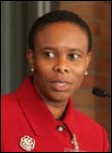
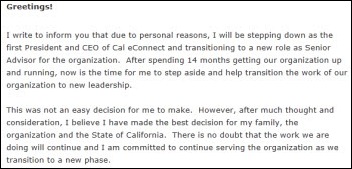

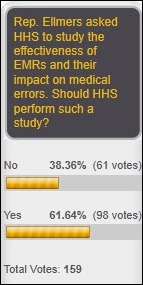
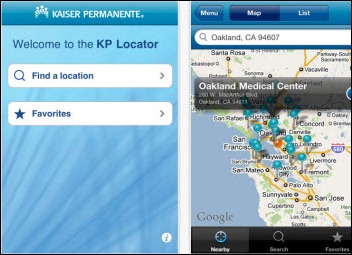



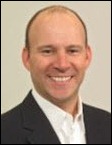
Dear Mr. Histalk,
With heartfelt thanks, I write to tell you how much I appreciate your publishing Tim Gee’s update about FDA activity.
Tim, do you have references on the information you obviously know?
It is long overdue, especially when reading the recent report by Wetterneck, Walker, et al, in July 29 on line JAMIA about Geisinger’s experience with a threefold increase in duplicate medication orders in its ICU after it deployed the Epic CPOE device.
The device used in the Geisinger study was not approved by the FDA; but, going forward, how can a device be approved as safe and effective when it increases error by more than 300%? Just wondering.
Well I’m guessing hospitals are going to start hearing people asking for the HP Touchpad to be supported. Everyone I know in the informatics community seems to be snagging them.
MDDS rules…is the EMR a MDDS? or other way around?
Down the road I don’t think it will matter.
You have FDA coming from one side, ONC from the other, and most likely not talking to each other.
It’ll be most interesting when ONCHIT looks at smart medical devices that capture /process PHI and medical data then hand it off to interface engines and ancillary /EMR applications. Now MDDS says all you have to do is ‘register’ your device. Next step…ONC certification, at least for privacy and scurity.
A- You can’t beat a good version of “She’s Gone”
B- Illinois has batted this issue around for years, thanks to fiesty AG Lisa Madigan. Question: Does serving Medicaid patients count as charity care?
Not Tired of Suzy RN: Thanks for your kind words. The gist of the this week’s piece is public information, but some of the details are rumors (hence it was submitted as a rumor).
For info on the MDDS rule, just Google: “MDDS final rule.” The first entry is text of the actual rule, and a bit down the list is my blog post on the final rule. This is where FDA lays out their rationale for regulating providers who create or modify medical devices (not just MDDSs).
The reference for the public appearance by Jeff Shuren is on February 25, 2010 in which he describes the patient injuries and deaths FDA has received that are attributed to “health-IT related malfunctions.” You can find that in this blog post: http://medicalconnectivity.com/2010/10/08/impact-of-potential-fda-regulation-of-emrs/
You can look up who’s registered products with FDA as MDDS’s by going to the FDA’s Registration and Listing database (http://www.accessdata.fda.gov/scripts/cdrh/cfdocs/cfRL/registration.cfm), selecting the OUG product code from the extremely long drop down list, and clicking Search. That will bring up each manufacturer and the names used to register their products (often not a recognizable commercial product name). Besides the few providers, theres 3 interface engine vendors, and a few other interesting/surprising vendors. There’s also more than one vendor who will likely be told by FDA that their product is not an MDDS, but a Class II device.
The news that FDA is working on a guidance document for health-IT applications has been signaled by Shuren’s public statements, the rest is rumor. Another guidance document that I didn’t mention above is on mobile apps. That too frames FDA’s approach to regulating applications – beyond smart phones and other mobile devices.
To your point about the Geisinger study, the FDA is very concerned about usability and its impact on the safety of medical devices. A while back they published a guidance document on this subject, and have pretty much started requiring usability testing for 510k submissions (Class II devices).
Frank Poggio: the EMR is not an MDDS. I think the point you’re making relates to software vendors having to adopt the FDA’s Quality System regulation. I suspect that will be the biggest impact from these near term regulatory changes. Also impacted with be providers who roll their own or modify existing software that FDA has designated a medical device.
One of the two public testimony events I referenced was in front of the ONC. There certainly appears to be some turf conflict between FDA and ONC, but I have no idea how real or serious it is. Bottom line, FDA is legally mandated to ensure patient safety for everything that meets the legal definition of a medical device (which includes certain software apps). ONC does not have this explicit mandate.
As it stands, we’re going to have to deal with both entities, each responsible for their own things. The only thing that would change that would be new legislation.
Standards development and adoption is be a potential sweet spot where both ONC and FDA could work together to further both their mandates. Hopefully, we’ll see some synergy there.
Re: Bottom line, FDA is legally mandated to ensure patient safety for everything that meets the legal definition of a medical device
I believe the Joint Commission also has a role in ensuring hospitals they accredit are following the JC Safety Standards, and using unsafe IT would violate thise standards.